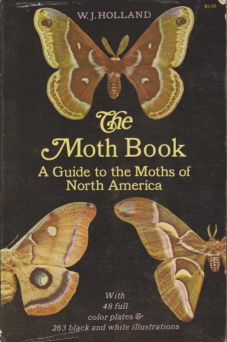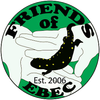|
Since 2005 the Friends of the East Brunswick Environmental Commission has been holding Moth Nights once or twice a year to explore and spotlight the nocturnal and seldom seen life around us. We use two methods to see what is flying in our parks; an extremely bright 175 watt Entomology Mercury Vapor Light and a sweet fermented mixture painted on tree trunks ie. what has been called "sugaring" for hundreds of years. The Mercury Vapor Light gives off light in wavelengths that are very attractive to moths and other insects, and the sweet mixture does the same through smell. We hang the light in front of a sheet suspended between two trees so that any insects that fly in toward the light have a place to perch so we can examine them. The sweet mixture is simply painted on the trees with a paintbrush an hour or so before dark.
The best nights for "mothing" are in the summer on cloudy sultry nights with a chance of thunderstorms, but even mild late winter nights can be productive. Experiment, there is almost always something flying around... Recommended Reading
Read this passage from the great entomologist W. J Holland's groundbreaking 1903 book The Moth Book: A Popular Guide to a Knowledge of the Moths of North America. At the time and for nearly 75 years afterwards (and even to some extent today), it was the reference book on moths with color plates and natural history of thousands of species. His passage on the excitement of sugaring for moths is far better than anything I can write about why we do moth nights. Dave Moskowitz tries to reread it each spring in anticipation of hot humid nights and sugaring!
While we take photographs on our moth nights, his collections were the basis for the plates in the book and for educating generations of entomologists and naturalists. But the thrill of the search on a sultry summer night is still the same. He describes the same excitement as we had on our last moth when a big underwing moth (the Catocala's he describes) alighted on the sugar. It is the moth in the two photos I posted on the moth page showing the bright red "underwings" where this large family of awesome moths derive their common name. Previous Moth Night Events |
Dave's Foul-Proof Moth Attraction Recipe: This fermented mixture varies a little depending on what's available but always the moths come by and can't resist a taste! Ingredients:
Mash the banana and/or peaches so that they are in little pieces. Mix the remaining ingredients together with the fruit in a large, open mouth container. Put a tight lid on and leave in the sun for a few hours. Paint a 1 foot square area on tree trunks about 3 or 4 feet off the ground. Check the painted spot every half hour or so, approaching slowly (many moths will be skittish) and using indirect light from a flashlight. One note of caution - the mixture will be attractive to bees and wasps the next day. |
